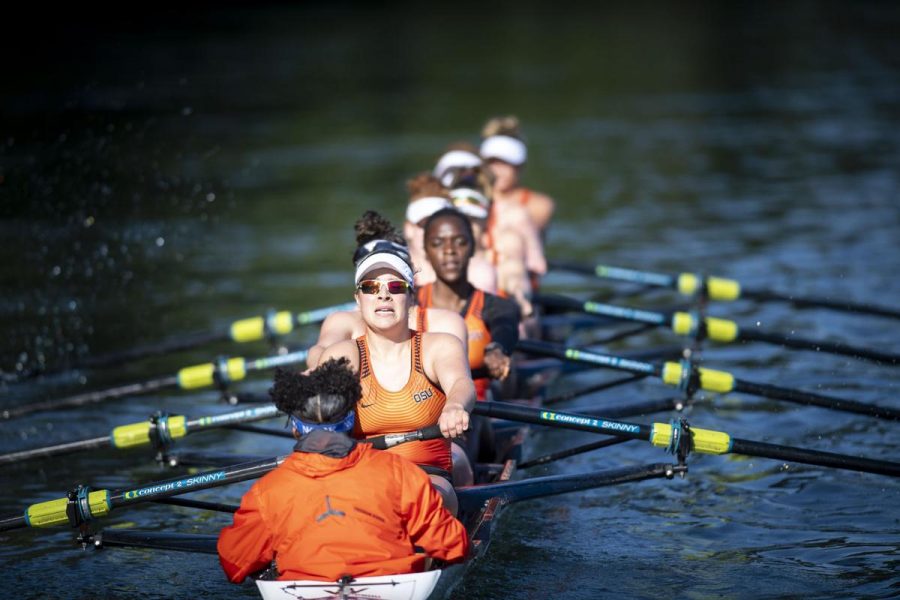Sports Breakdown: Rowing
May 5, 2020
Originally an advancement of transportation generations ago, rowing continues to not only be an effective means of transportation and exercise, but a popular competitive sport worldwide, including being set on an international stage in the Summer Olympics every four years.
The competitive sport of rowing, or also known as crew, begins with a boat, oars and athletes who direct these boats on water. These oars are controlled by the boat riders to propel the boat forward, with an eventual goal of winning the race.
Within competitive rowing, there are different types of equipment and regulations with special forms of racing and an overall emphasis on speed.
While rowing, the athletes are seated facing the stern or back of the boat. The way the athletes propel the boat forward is with oars, which are held in place through oarlocks on the boat. Meets take place in rivers, lakes, seas or large bodies of water. The sport’s athletes include successful individuals who are typically tall, flexible and strong with an emphasis in endurance.
Glossary:
Number of Rowers: 1, 2, 3, 4, 5 or 9, depending on boat class, or if there is a coxswain.
Coxswain: Member of crew who sits at the stern of the boat and directs it.
Sweep: This is when each rower on the boat has one oar with both hands to themselves.
Scull: When each rower has two separate oars, one for each hand.
Oars: Part of the inboard that individuals row the boat with. Variations of oars depend on type of race.
Weight: This is crucial for not only the boat, but how many people you have on the boat. This affects the speed and aero-dynamics.
Length, width and height: These factors are all based on how the boats performance should be built as in terms speed and surface tension.
Forward-facing Systems: Facing the bow as described through the title.
Rearward-facing Systems: The oldest form of the sport, with a seated individual pulling one of two oars.
Notable Rower Athletes:
Grace Prendergast: A national champion, Olympian and three-time world champion from New Zealand.
Cameron and Tyler Winklevoss: Became famous for depiction in the 2009 film, The Social Network. Aside from their relationship with Facebook and Bitcoin, the twins competed together on the 2008 Olympic team in Beijing, finishing in sixth place.
Valent and Martin Sinkovic: Croation brothers who won the gold medal in Men’s double sculls at the 2016 Summer Olympics in Rio, Brazil.
Karen Kraft and Melissa Schwen: The two hold the tie for the best finish by American women in the Olympics, finishing in second-place, good for a silver medal in the 1996 Olympics in Atlanta, Georgia. The two also received a bronze medal in the following 2000 Summer Olympics in Sydney, Australia.
The Boys in the Boat, written by Daniel J. Brown: A notable read of the remarkable true story of nine American men and their quest for a gold medal in the 1936 Olympics in Berlin, Germany.











































































































